Our History
We've accomplished a lot in the last hundred years. Find out more about where we came from and where we're headed.
We've accomplished a lot in the last hundred years. Find out more about where we came from and where we're headed.
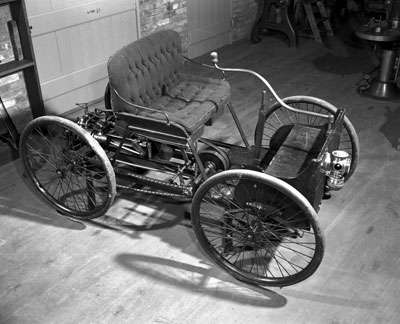
Henry Ford's first vehicle rode on four bicycle wheels and was powered by a four-horsepower engine. Instead of a steering wheel, the Quadricycle had a tiller. The gearbox had only two forward gears with no reverse.
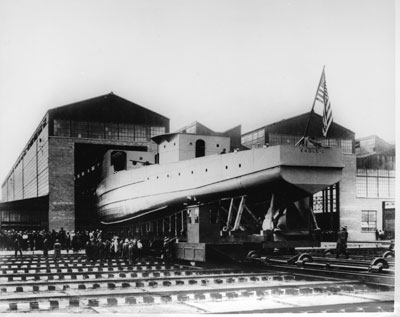
Ford leaves company within one year.
Ford designed the 26-horsepower Sweepstakes and defeated Alexander Winton's 70-horsepower Bullet in 10 laps around the one-mile oval of the Detroit Driving Club. The victory lead to Henry Ford's second short-lived attempt at auto manufacture, the Henry Ford Company.
With 12 investors and 1,000 shares, the company had spent almost all of its $28,000 cash investment by the time it sold the first Ford Model A on July 23, 1903. But by October 1, 1903 Ford Motor Company had turned a profit of $37,000.
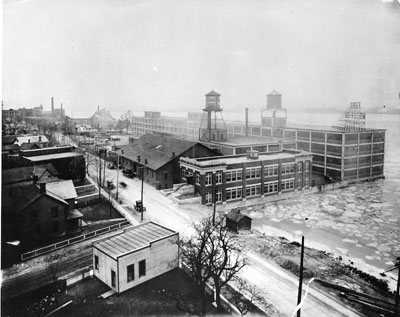
Ford’s first international plant was built in Walkerville (now Windsor), Ontario, right across the Detroit River from Ford’s existing facilities. The company was a separate organization with its own set of shareholders. It was created to sell vehicles not just in Canada, but also all across the then-current British Empire.
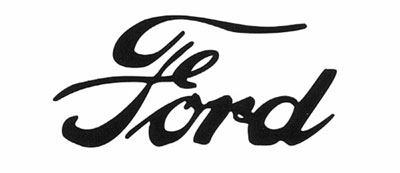
Childe Harold Wills designed the Ford logo. He used his grandfather’s stencil set, which was based on the style of writing taught in schools when Ford and Wills were children. However, the Ford oval would not be featured on a car until the 1927 Model A.
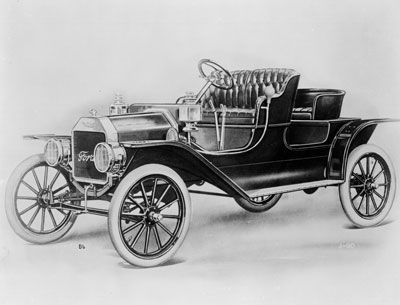
Henry Ford’s Model T put the world on wheels with a simple, affordable, durable automobile. Ford sold 15 million Model Ts before ceasing production in May 1927, making it one of the best-selling vehicles of all time, and arguably the most famous car in the world. In 1908, there were only about 18,000 miles of paved roads in the US. To deal with the primitive roads, Ford used light and strong vanadium steel alloy for critical parts. At the time, most of the automobiles in existence were luxurious novelties rather than affordable transport. But to appeal to the mass market, Ford’s vehicle also had to be reliable and easy to maintain. Fortunately for millions of new drivers, it was.
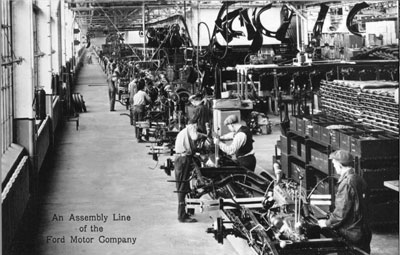
Ford's innovation eventually reduced the Model T's chassis assembly line from 12.5 to 1.5 hours, and in doing so precipitated a revolution in manufacturing. The accelerating speed with which Ford could produce cars helped him continue to lower the price of the Model T.
In 1914, $5 per day was double the existing pay rate for factory workers, and on top of that, Ford reduced the workday from nine to eight hours. The day after the “$5 Day” was announced, an estimated 10,000 people lined up outside Ford’s employment office hoping to be hired. Ford’s increased pay greatly improved employee retention since the monotonous and strenuous work of the moving assembly line was causing high turnover. The increased wage had the added effect of allowing many of Ford’s employees to purchase the cars they produced, and the eight hour workday allowed Ford to run 3 shifts a day instead of 2. The increased pay, increased leisure time, and even increased the personal mobility of car ownership were all critical factors in the creation of an American middle class.
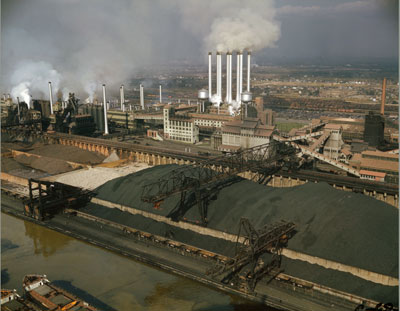
It would become the largest integrated factory in the world by the following decade. Throughout its history, the self-contained Rouge Complex has contained a wide array of industries necessary to produce cars, including steel mills, a tire factory, a glass factory, a power plant and a reception depot for coal, iron ore, rubber and lumber. In the 1930s the complex employed over 100,000 workers. Today the River Rouge Complex continues to evolve to meet the needs of modern manufacturing processes.
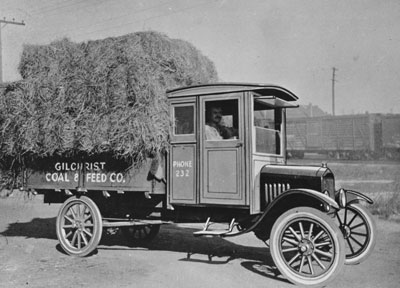
The Ford Model TT was a truck based on the Model T car, but with a reinforced chassis and rear axle. This early pickup was rated at one ton.

These 42 Eagle-class boats were the first product manufactured at the Rouge. In its efforts to aid the Allies in WWI, Ford also produced more than 38,000 Model T cars, ambulances, and trucks, 7,000 Fordson tractors, two types of armored tanks, and 4,000 Liberty airplane engines for the Allies. Afterward, Ford hired disabled veterans returning from the war, making the automaker one of the first companies to hire people with disabilities and to adapt work environments to their specific needs.
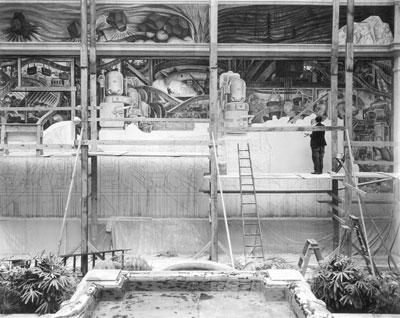
On the same day, Henry Ford put a plan in place to buy out his investors and make himself, Clara Ford, and Edsel the sole owners of the business. Edsel’s interest in aesthetic automotive design brought a new dimension to Ford Motor Company, pushing the company to begin producing cars that were beautiful as well as practical. Edsel was also an extremely important art benefactor in Detroit, and one of the best-known paintings he commissioned was Diego Rivera’s Detroit Industry mural. His aesthetic legacy lives on in the original Lincoln Continental.
Ford purchased Lincoln from Henry Leland, his former business associate from the Detroit Automobile Company. Since then, Lincoln has produced many luxury cars of historical and aesthetic note, including the 1931-1939 K-Series, 1936 Zephyr, Edsel Ford’s original Continental, the ensuing first-generation Lincoln Continental and the classic 1956-1957 Continental Mk. II.
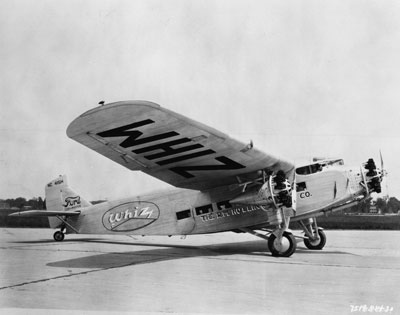
Ford’s plane was nicknamed the “Tin Goose,” a reference to the Model T’s nickname as the “Tin Lizzie.” The Tin Goose was one of the first airplanes used by America’s early commercial airlines. Combined with Ford’s reputation, application of assembly-line techniques and investment in Ford Airlines, the plane helped spur the creation of the commercial airline industry. And to further accelerate the industry’s development, Ford offered the plane’s 35 patents free of royalties, including his patent for the navigational radio beam.
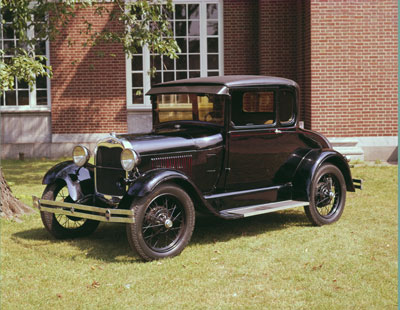
While the Model T dominated the auto industry from 1908 to the early 1920s, by the middle of the decade there was fierce competition from other automakers. After the 15 millionth Model T drove off the assembly line on May 26, 1927, Ford closed plants all over the world to spend six months retooling factories and perfecting the design of a new car. Ford called the new car the Model A, commemorating Ford Motor Company’s first car, the 1903 Model A. The car was the first vehicle to sport the iconic Blue Oval logo, and it included innovative features like a Safety Glass windshield. By 1931 Ford had sold over five million Model As despite the difficulties of the Great Depression.
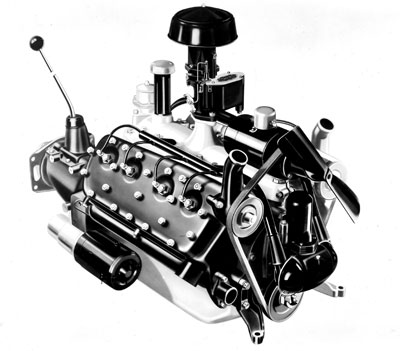
As with the new Model A, Henry Ford shut down all other production operations to work on this innovative project. At great effort and expense, the company engineered a way to cast the first commercially successful V8 engine. The flathead was a hit. It was affordable, versatile, and introduced just as the American market was becoming fascinated with ever-more powerful engines. It remained in production for over 22 years. To this day the flathead remains extremely popular with hot rodders.
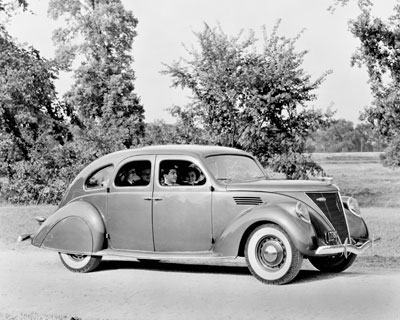
Much like the Mercury brand, Lincoln-Zephyr was designed to sell at a price point between the Ford V8 De Luxe and the high-end luxury cars offered by Lincoln. Lincoln-Zephyr’s sleek, aerodynamic shapes helped make the brand a sales success, but when auto production ceased during WWII, the Zephyr name was dropped as well.
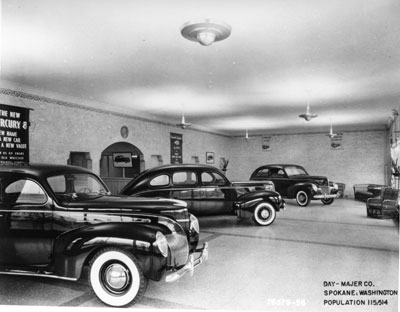
Edsel Ford created Mercury cars to bridge the gap between affordable Fords and luxurious Lincoln cars. The first Mercury was the 1939 Mercury 8, which had a V8 engine and a stylish body characteristic of Edsel Ford's design sense.
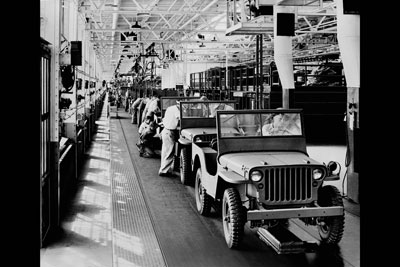
The vehicles were nicknamed for their "GP," or general-purpose designation.
After years of struggle between management and labor at Detroit's major automakers, Ford signed a contract guaranteeing better pay, benefits and working conditions for employees.
Through its manufacturing expertise, Ford facilities built a staggering number of automobiles, planes, tanks, aircraft engines and other materiel for the war effort. By the end of WWII, Ford had produced more than 8,000 B-24 Liberator bombers. Charles Lindbergh, the famous trans-Atlantic pilot, worked as an advisor for the construction of bombers at Ford’s Willow Run plant. In 1944, Rose Will Monroe was working at Willow Run as a rivet gun operator when she was chosen to appear in a promotional film for war bonds. Rose became the personification of the fictional “Rosie the Riveter” character as depicted in the iconic “We Can Do It!” posters.
Edsel was the only child of Henry and Clara Ford. After his death, Henry Ford returned to his former position as president of Ford Motor Company. Today, Edsel's legacy lives on in his contributions to the design of Lincoln cars and his generous backing of art in Detroit.
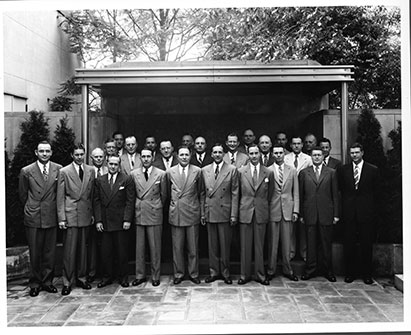
The son of Edsel and the grandson of Henry Ford, Henry Ford II, served as president from 1945 to 1960 and as chairman and CEO from 1960 to 1979. When Henry II took over, the company and its bookkeeping practices were in disarray. With the help of ten former U.S. Army Air Force officers nicknamed the “Whiz Kids,” Henry II transformed the organization into a disciplined company with modern management systems – prepared for the global challenges of the post-war world.
With its first postwar truck design, Ford ceased building trucks on car platforms and used a purpose-built truck platform instead. The truck was available in eight sizes and weight ratings, from the ½ ton capacity F-1 to the three-ton capacity F-8. In 1953, Ford replaced the F-1 with the ½ ton F-100, along with the F-250 ¾ ton trucks and the F-350 one-ton trucks. In 1984, the F-100 was replaced by the F-150 line of trucks. Since 1982, F-series has been the best-selling vehicle in the U.S.
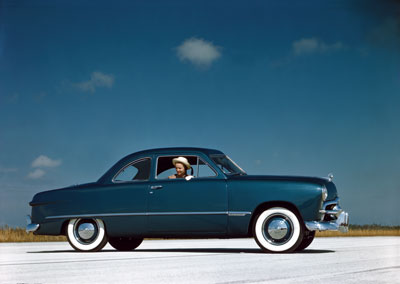
The 1949 Ford was the first all-new American car design to come out of Detroit after WWII. With its wind tunnel-tested aerodynamic shape, integrated pontoon fenders, airplane-inspired spinner grille and an updated V8, the new car was as radical a change as the 1928 Model A.
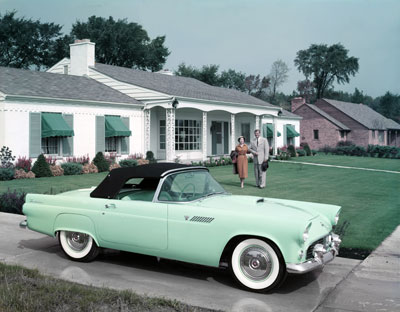
The T-Bird emphasized comfort and convenience over sportiness. With its performance, design and distinctive porthole windows, the car would become a classic.
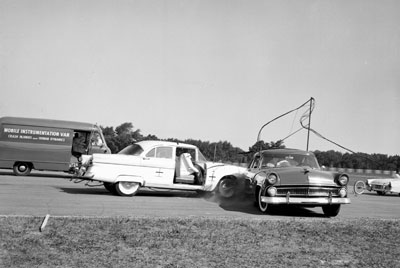
In the 60 years since then, Ford has performed more than 31,000 crash tests around the world. In recent years Ford has also used virtual crash testing to maximize the quantity and availability of crash data. In tandem with physical testing, the crash simulations help Ford gather more data than ever before.
At the time, Ford's initial public offering (IPO) of common stock shares was the largest IPO in history.
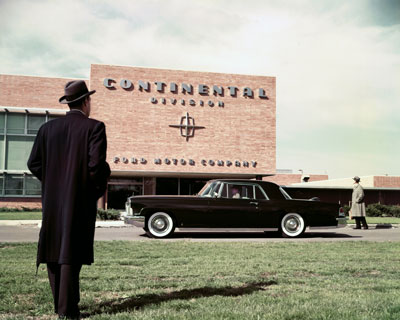
Under Henry Ford's grandson, William Clay Ford, the 1956 Mk. II was a revival of the 1941 Continental that grew out of a custom car designed for Edsel Ford's private use. Edsel and designer E.T. Gregorie named these stylish and elegant cars for the inspiration they drew from the "continental" cars they saw in Europe.
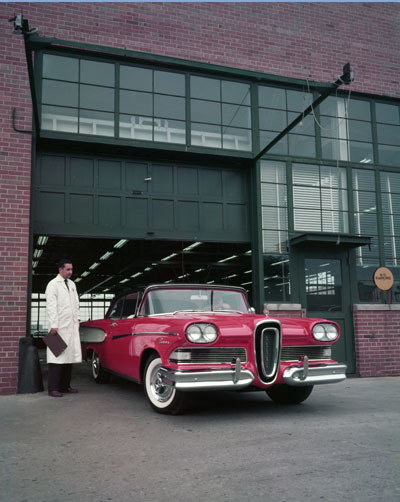
Introduced as a recession was beginning in the United States, the Edsel was simply the wrong car for the wrong time. However, the car's highly unique styling makes it a valuable collector's car to this day.
The full name of Ford's financial services arm is Ford Motor Credit Company LLC, and today the company offers loans and leases to car buyers, in addition to loans and lines of credit for Ford and other dealerships.
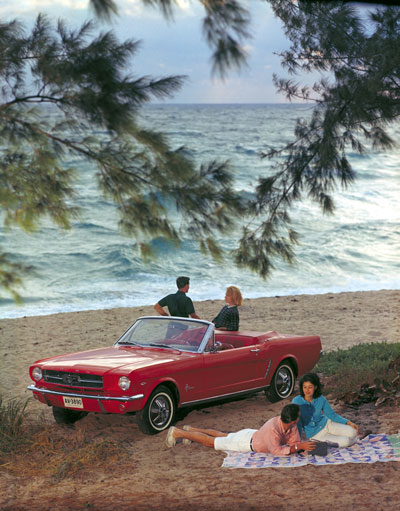
The Mustang came to define the pony car class with its combination of a long hood, short deck, affordable price and customization options. The Mustang was a huge success, and today it remains one of the fastest-selling vehicles in history. With its role in movies like Bullitt and songs like "Mustang Sally," the car quickly became a cultural icon as well.
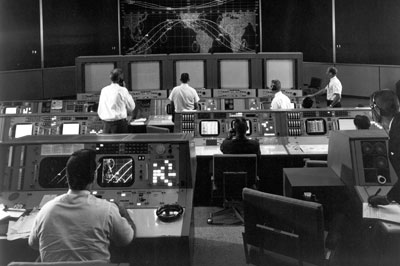
Ford owned Philco from 1961 to 1974, during which the company produced consumer electronics, computer systems, and military projects. In addition to designing, building, equipping and staffing Mission Control, Ford’s Philco electronics subsidiary performed support work for NASA’s Apollo and Gemini space programs thanks to Philco’s capabilities in transistors, solid-state devices, and microelectronics. Later, Ford Aerospace and Communications Corporation evolved out of Philco. In 1976 the company built seven INTELSAT V satellites for the International Telecommunications Satellite Organization. These satellites are still used today to send television transmissions and telephone calls between continents.
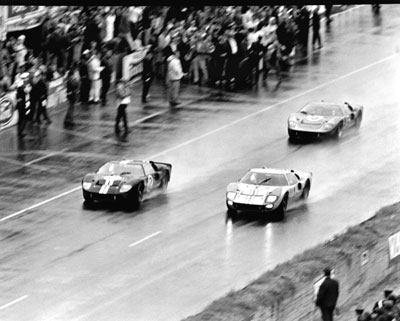
Ford broke Ferarri's six-year winning streak at Le Mans to become the first American manufacturer to ever win the race. 1966 was the first of four consecutive victories for Ford, which won the 1966, 1967, 1968 and 1968 24 Hours of Le Mans with various generations of the GT40.
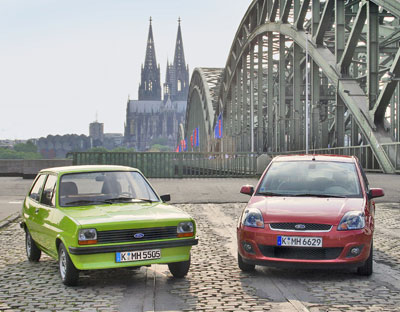
The subcompact hatchback became the company’s first internationally successful front-wheel drive model. At $870 million, its development budget was also the largest in Ford’s history. Moreover, Ford built a massive plant in Almusafes, Spain, near Valencia, to manufacture the car. The investments paid off, and the Fiesta broke the one-year sales record of the 1965 Mustang. From 1978 to 1981, Ford also sold the European Fiesta in North America. However, it wasn’t until 2009 that Ford would begin selling the Fiesta in the U.S. again.
The smaller platform debuted in response to rising oil prices and new fuel economy regulations.
Caldwell was the first non Ford-family member to become chairman and CEO of Ford.
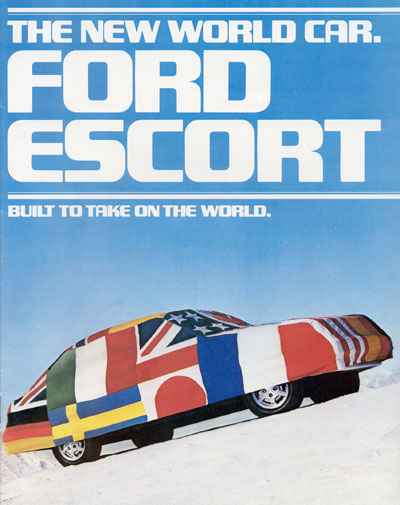
When the Ford Escort was first sold in North America, the car was designed to share components with the European Escort. As such, in its first year the North American car featured a badge with the name “Escort” superimposed over a globe instead of a blue oval. The car was one of Ford’s best-selling vehicles in the ‘80s.
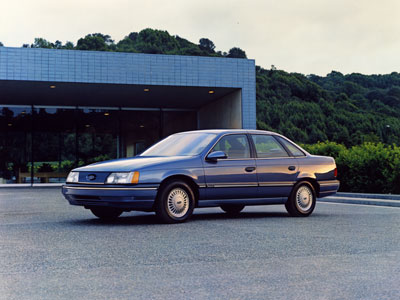
The Taurus’ aerodynamic “jelly bean” body style broke tradition with the boxy sedan shapes of the time, helping the car become one of Ford’s most popular vehicles ever. The car was an important part of a worldwide shift in automotive design. Within Ford, the car represented a shift toward increased quality standards and front-wheel drive designs.
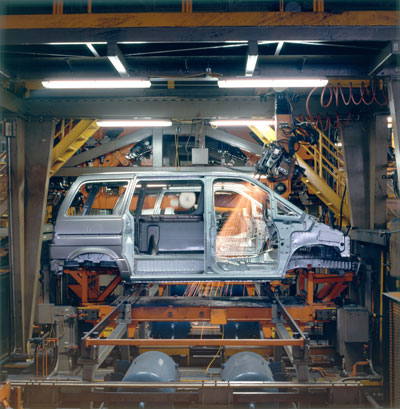
The modular assembly line made use of automated ancillary assembly lines to produce vehicle sub-assemblies. The sub-assemblies were then added into the main assembly line. The trial run at St. Louis was a success, and today most Ford plants use modular assembly lines.
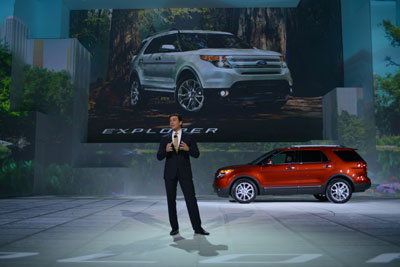
In doing so, Ford helped launch the domestic SUV market. As SUVs became popular substitutes for family sedans, station wagons and vans, the Explorer became one of Ford’s most successful vehicles. The Explorer was a more comfortable and better-handling replacement for the Ford Bronco, which was discontinued in 1996.
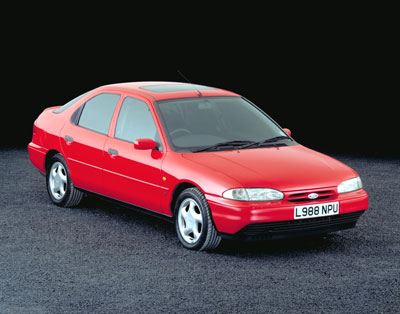
Though it was first introduced in Europe, the Mondeo was sold as the Ford Contour and Mercury Mystique in the United States until 2000. Today the Mondeo is known as the Fusion in the United States.
With lead acid batteries, regenerative braking, and a 700 lb. payload rating, the Ranger EV was a forerunner to today’s electric vehicles and hybrid energy systems.
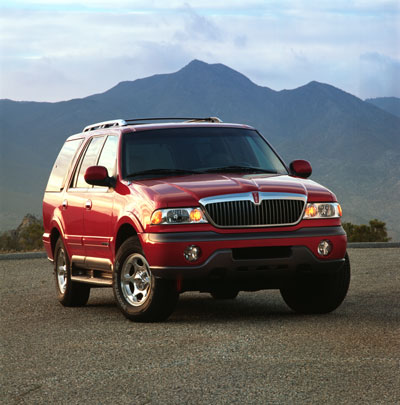
The change helped the company return its focus to its core operations -- building cars -- and it realigned the company's values to emphasize its employees and the quality of its products.
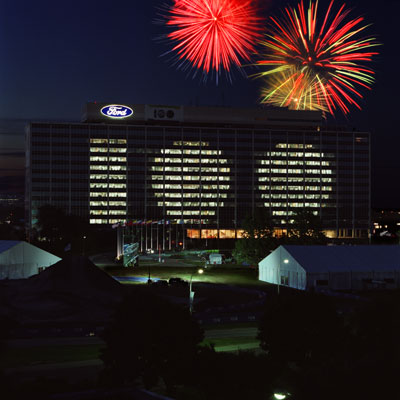
To commemorate the centennial of the company that put the world on wheels, Ford offered limited production centennial editions of five of the vehicles in its lineup at the time. Like the early Model T, the vehicles were offered in “any color so long as it is black.”
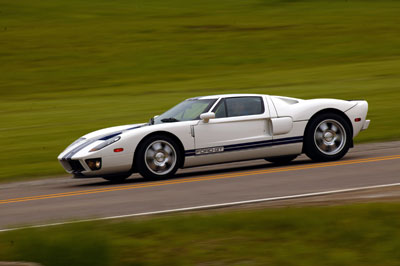
The mid-engine, 550 horsepower Ford GT was inspired by the legendary GT40 race cars that dominated the 24 Hours of Le Mans from 1966 to 1969.
Under Mullaly, Ford didn’t just weather the financial crisis of 2008 as the only American auto manufacturer to avoid receiving a government bailout loan. Instead of waiting out the crisis, Ford continued to aggressively invest in product development so that when the economy recovered Ford products would be some of the best vehicles on the market. A key part of Mullaly’s leadership was the One Ford plan. One Ford envisioned every person in every part of the global enterprise as part of a single team united by a common culture and a shared goal to deliver outstanding products.
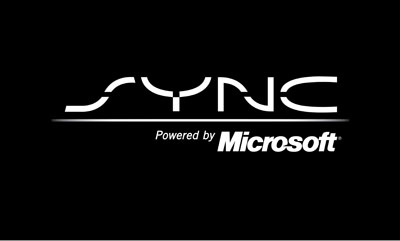
Created from a partnership between Ford and Microsoft, SYNC offers a hands-free, voice-activated connectivity system with mobile phone integration, navigation and voice-activated access to entertainment. Ford has continuously updated SYNC since its introduction in order to help drivers keep their hands on the wheel and their eyes on the road while remaining connected to their technology.
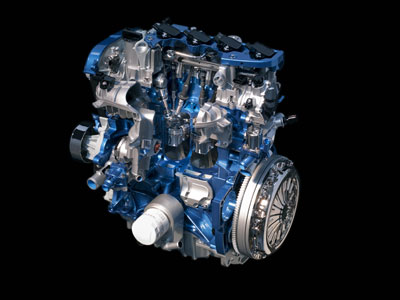
Delivering better fuel economy and more power than a naturally aspirated engine of the same size, Ford’s EcoBoost engines quickly became a popular choice in the U.S. and abroad.
In a radical break with industry conventions, the new design uses an all-aluminum body to cut as much as 750 pounds from the truck’s weight. The technology necessary to create the new truck resulted in over 100 new patents approved or pending for Ford.
For 2015, the all-new sixth generation of the iconic pony car includes an independent rear suspension and a selection of high-output engines.
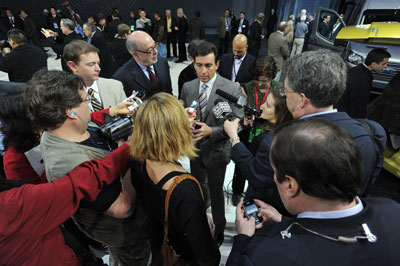
Fields is committed to building momentum around the One Ford plan through product excellence and instilling a spirit of innovation throughout the company.